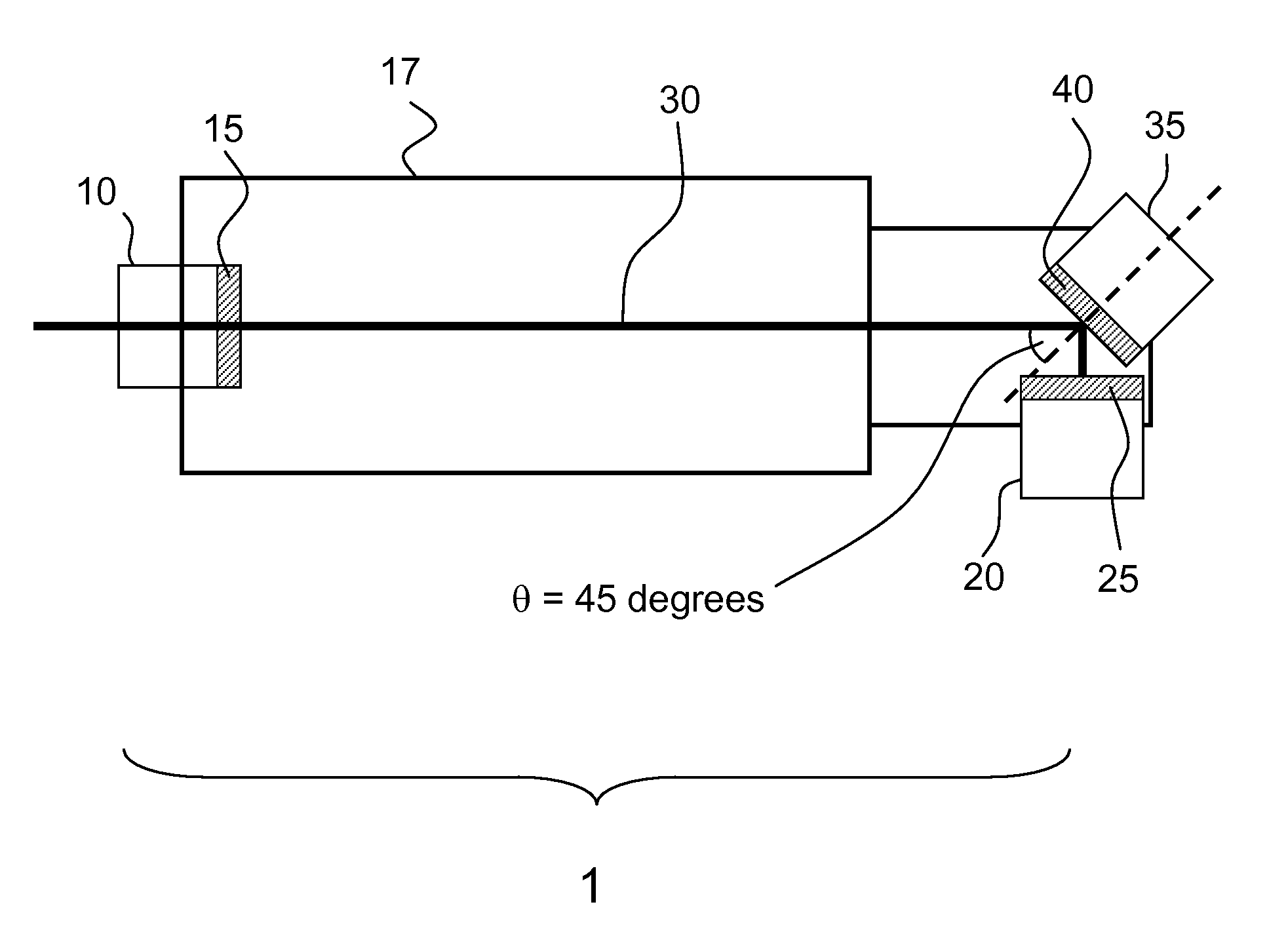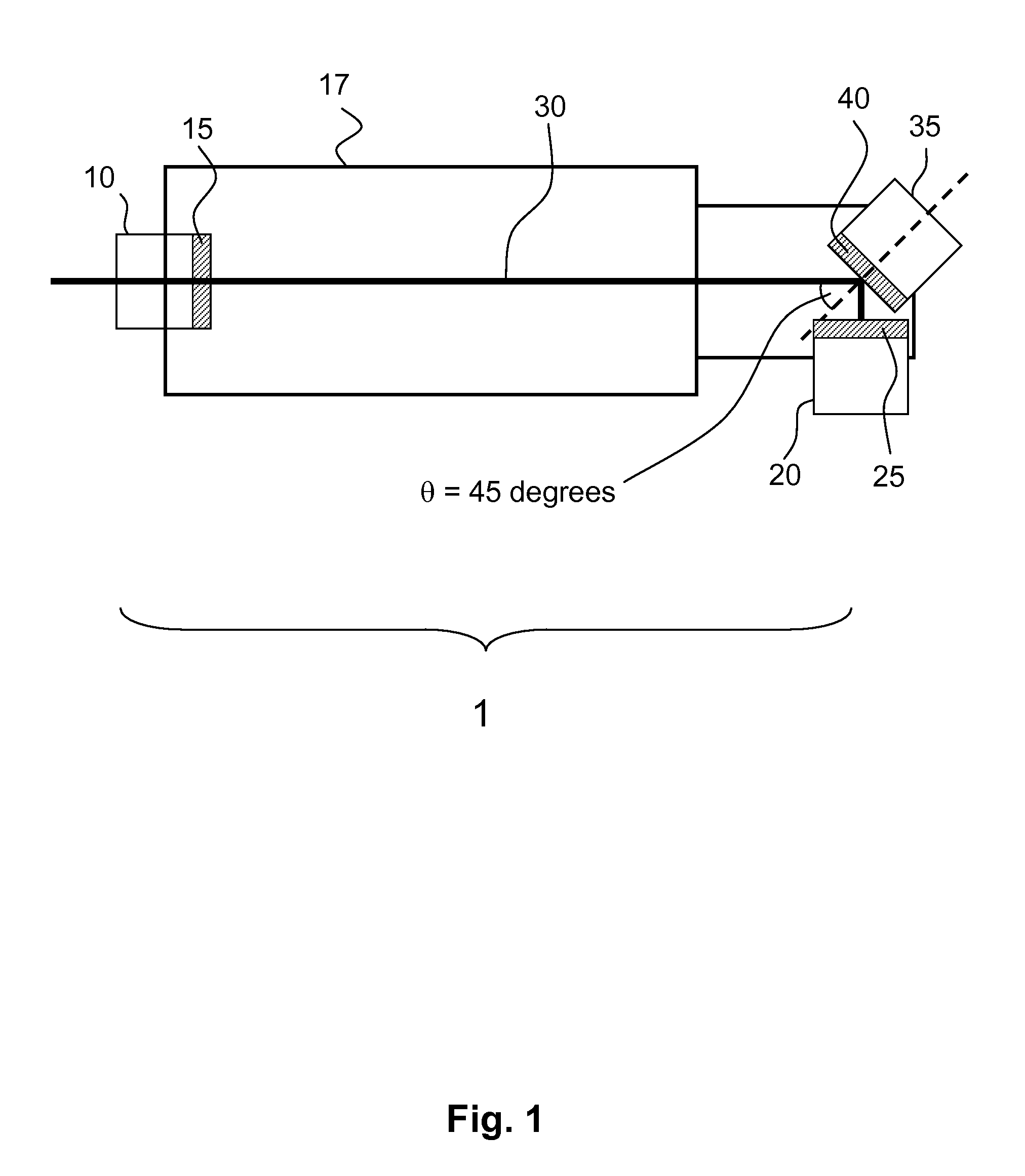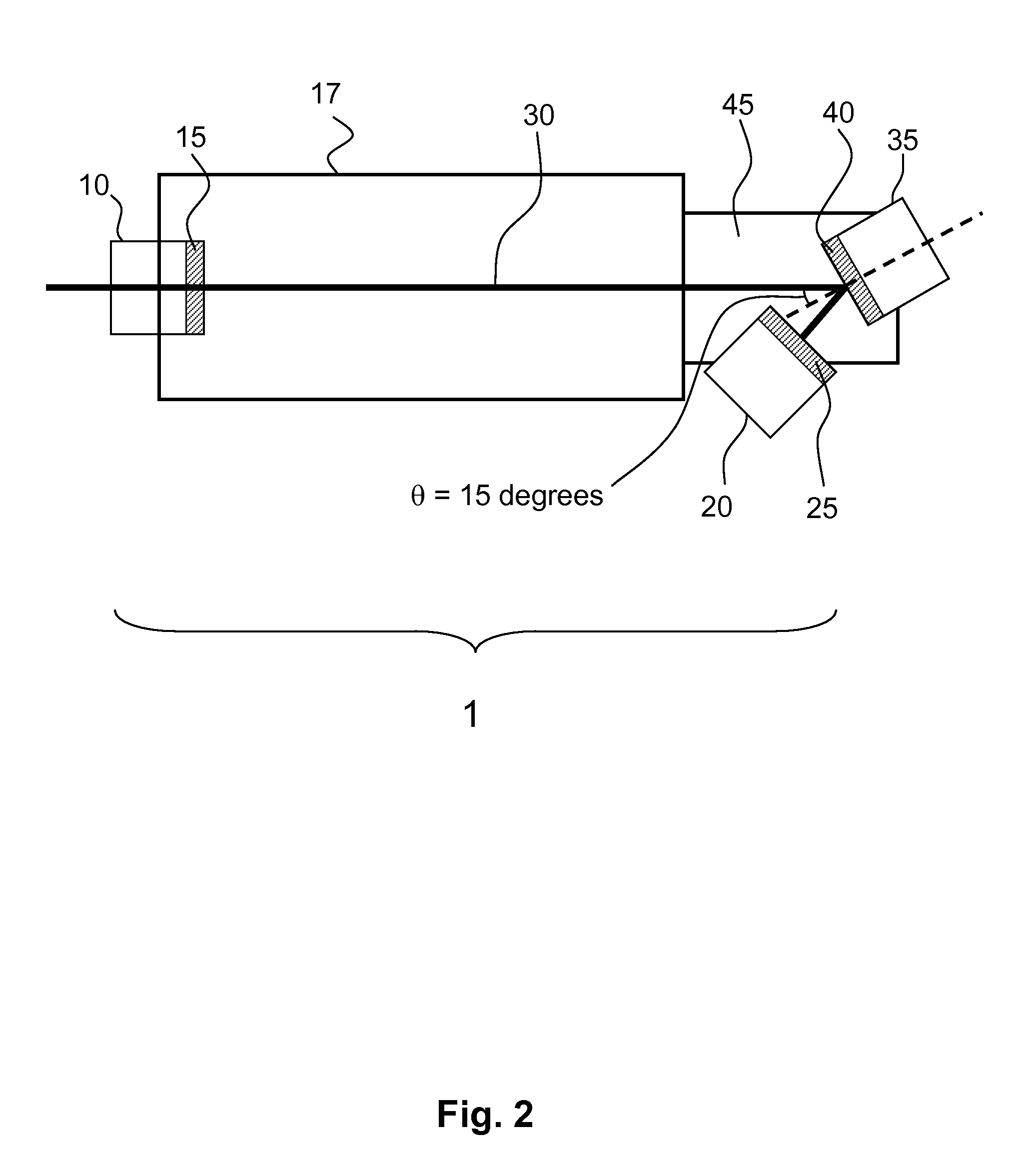Multi-longitudinal mode laser providing polarization control
a multi-longitudinal mode, laser technology, applied in the direction of laser details, optical resonator shape and construction, electrical apparatus, etc., can solve the problem of limiting the lasing of the s-polarization state, and affecting the lasing speed of the laser. achieve the effect of effective frequency stabilization, facilitate the achievement of very small, yet non-zero reflection phase differences, and facilitate the effect of controlling the manufactur
- Summary
- Abstract
- Description
- Claims
- Application Information
AI Technical Summary
Benefits of technology
Problems solved by technology
Method used
Image
Examples
example 1
Allan Deviation Characterization of Dual-Longitudinal Mode HeNe Lasers
[0097]We have constructed two locked laser systems using the 45 degree mount tubes in housings (laser design 2 in Table 1 and see optical configuration in FIG. 1) which work well with a small (greater than a few Gauss) applied magnetic field. FIG. 5 provides a schematic diagram showing the experimental setup for the Allan deviation characterization experiments.
[0098]Allan Deviation Measurements dual-Ion (dual-longitudinal mode HeNe vs I2-stabilized—The stability of one of the present dual-longitudinal mode HeNe lasers was measured against an Iodine-stabilized HeNe laser.
[0099]FIG. 6 provides a plot of frequency offset versus time for a dual-longitudinal mode HeNe laser of the present invention. In FIG. 6 frequency offset is measured with respect to an iodine stabilized laser.
[0100]FIG. 7 is a plot of the frequency stability of the laser, relative to an iodine-stabilized HeNe laser. The vertical axis is the Allan d...
example 2
Frequency Stabilized Dual-Longitudinal Mode HeNe Lasers
[0106]It is a goal of certain aspects of the present invention to provide multi-longitudinal mode lasers and resonant cavity configurations for generating radiant output having highly stable and precisely controlled optical characteristics, such as polarization states and frequencies. To demonstrate this capability of the present invention, frequencies were measured of the radiant output of a mode locked laser system having an intracavity reflector positioned such that the laser electromagnetic radiation is incident upon the intracavity reflector at a non-normal angle of incidence. The optical geometry of the laser system corresponds to laser design 2 shown in Table 1 and has a resonant cavity optical geometry as shown in FIG. 1. The intracavity reflector has a thin film coating comprising an alternating sequence of Ta2O5 and SiO2 thin film layers, wherein the physical thickness of thin film layers in the sequence are selected t...
PUM
 Login to View More
Login to View More Abstract
Description
Claims
Application Information
 Login to View More
Login to View More - R&D
- Intellectual Property
- Life Sciences
- Materials
- Tech Scout
- Unparalleled Data Quality
- Higher Quality Content
- 60% Fewer Hallucinations
Browse by: Latest US Patents, China's latest patents, Technical Efficacy Thesaurus, Application Domain, Technology Topic, Popular Technical Reports.
© 2025 PatSnap. All rights reserved.Legal|Privacy policy|Modern Slavery Act Transparency Statement|Sitemap|About US| Contact US: help@patsnap.com



